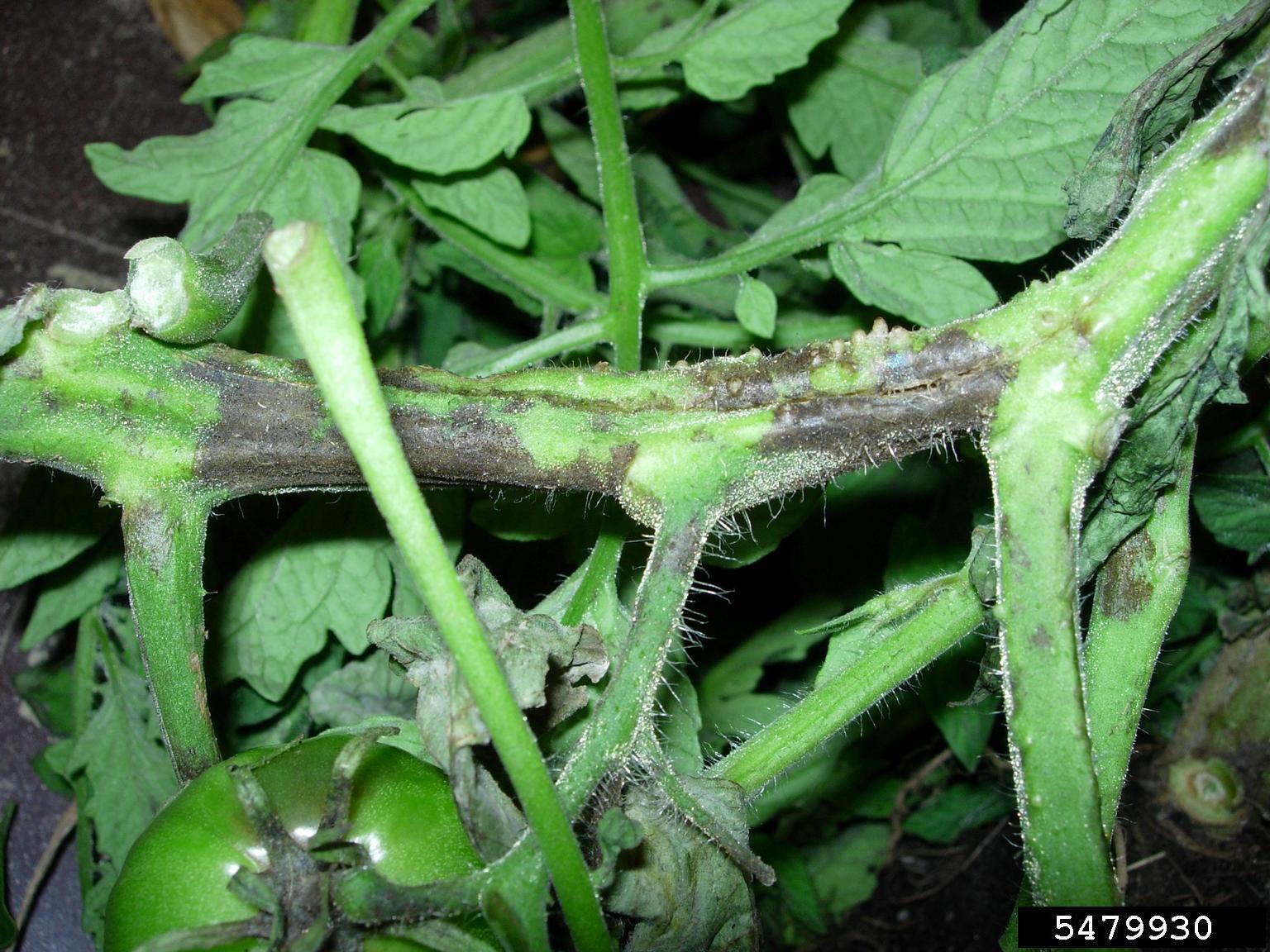Black Stems On Tomatoes: Treating Tomato Stem Diseases In The Garden

One day your tomato plants are hale and hearty and the next day they're riddled with black spots on the stems of the tomato plants. What causes black stems on tomatoes? If your tomato plant has black stems, don't panic; it's more than likely the result of a fungal tomato stem disease that can easily be treated with a fungicide.
Help, the Stem is Turning Black on My Tomatoes!
There are a number of fungal diseases that result in a stem turning black on tomatoes. Amongst these is Alternaria stem canker, which is caused by the fungus Alternaria alternata. This fungus either already lives in the soil or spores have landed on the tomato plant when infected old tomato debris has been disturbed. Brown to black lesions develop at the soil line. These cankers eventually enlarge, resulting in the death of the plant. In the case of Alternaria stem canker, unfortunately, there is no treatment. However, Alternaria resistant varieties of tomatoes are available. Bacterial canker is another tomato stem disease that causes black spots on the stems of tomato plants. It is readily apparent on older plants as brown streaking and dark lesions. The lesions can appear anywhere on the plant. The bacteria Clavibacter michiganensis is the culprit here and it survives indefinitely in plant tissue. To prevent infection, sanitize equipment with a bleach solution and soak seeds in 130 degrees F. (54 C.) water for 25 minutes prior to planting. Till areas of the garden where tomatoes have been grown thoroughly to break up and hasten the decaying of old plants. Black stems on tomatoes may also be the result of Early blight. Alternaria solani is the fungus responsible for this disease and is spread in cool, humid weather, often after a period of rain. This fungus thrives in the soil where infected tomatoes, potatoes, or nightshades have grown. Symptoms include small black to brown spots under a half-inch (1.5 cm.) wide. They can be on leaves or fruit, but more commonly on stems. In this case, a topical application of copper fungicide or Bacillus subtilis should clear the infection up. In the future, practice crop rotation. Late blight is another fungal disease that thrives in humid climates. It usually appears in the early summer when humidity is up, with a humidity of 90% and temps around 60-78 degrees F. (15-25 C.). Within 10 hours of these conditions, purple-brown to black lesions begin to dot leaves and spread down into the stems. Fungicides are helpful to manage the spread of this disease; use resistant plants whenever possible.
Preventing Tomato Stem Diseases
If your tomato plant has black stems, it may be too late or a simple fungal application may remedy the issue. Ideally, the best plan is to plant resistant tomatoes, practice crop rotation, sanitize all equipment, and avoid overcrowding to prevent the disease from infiltrating your tomatoes. Also, removing the lower branches and leaving the stem bare up to the first set of flowers can be helpful, then mulch around the plant after removing the foliage to this point. Mulching can act as a barrier as can removing the lower leaves so rain splashed spores cannot infect the plant. Additionally, water in the morning to give the foliage time to dry and remove any diseased leaves immediately.
Sign up for the Gardening Know How newsletter today and receive a free copy of our e-book "How to Grow Delicious Tomatoes".

Amy Grant has been gardening for 30 years and writing for 15. A professional chef and caterer, Amy's area of expertise is culinary gardening.
